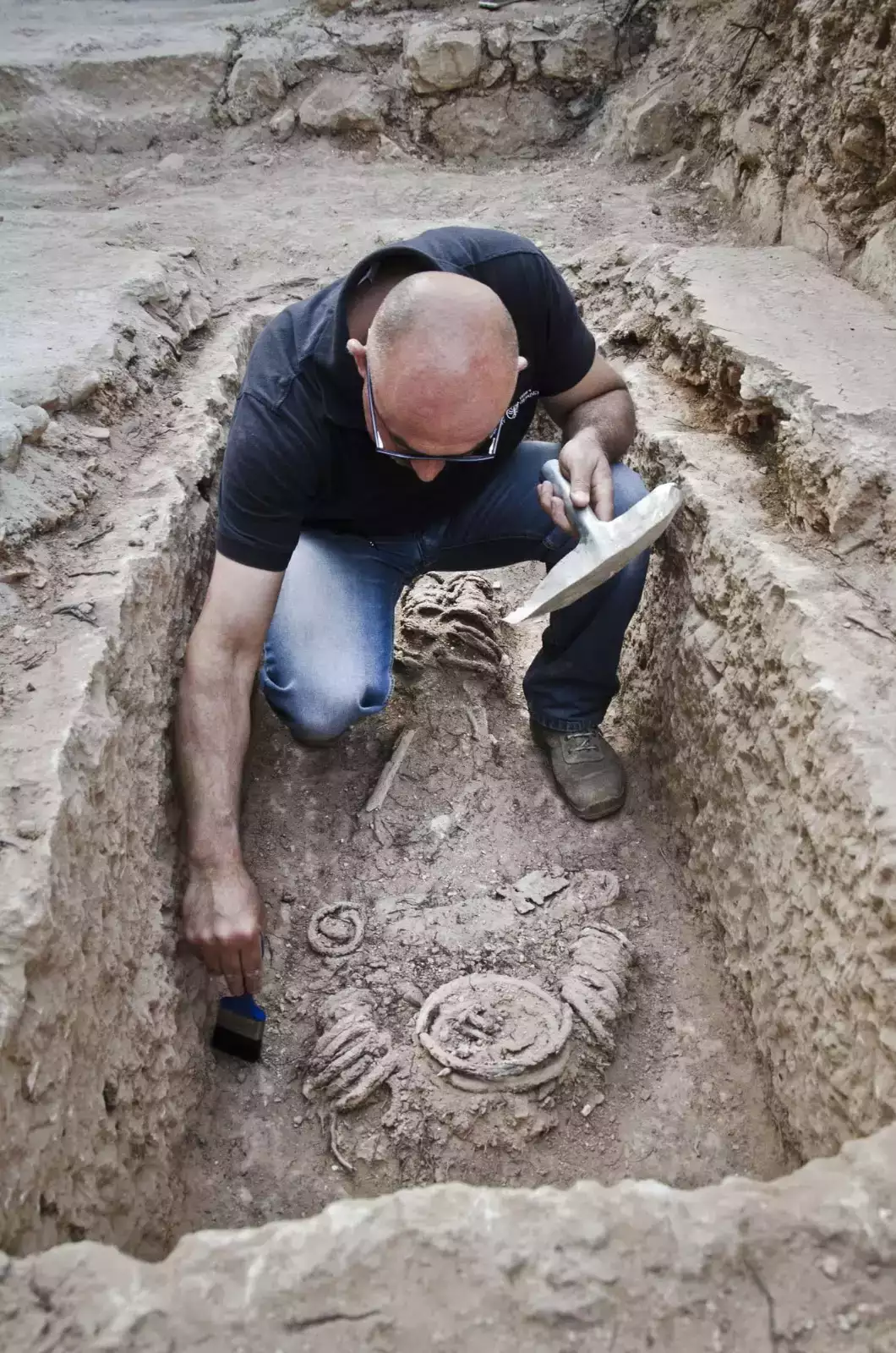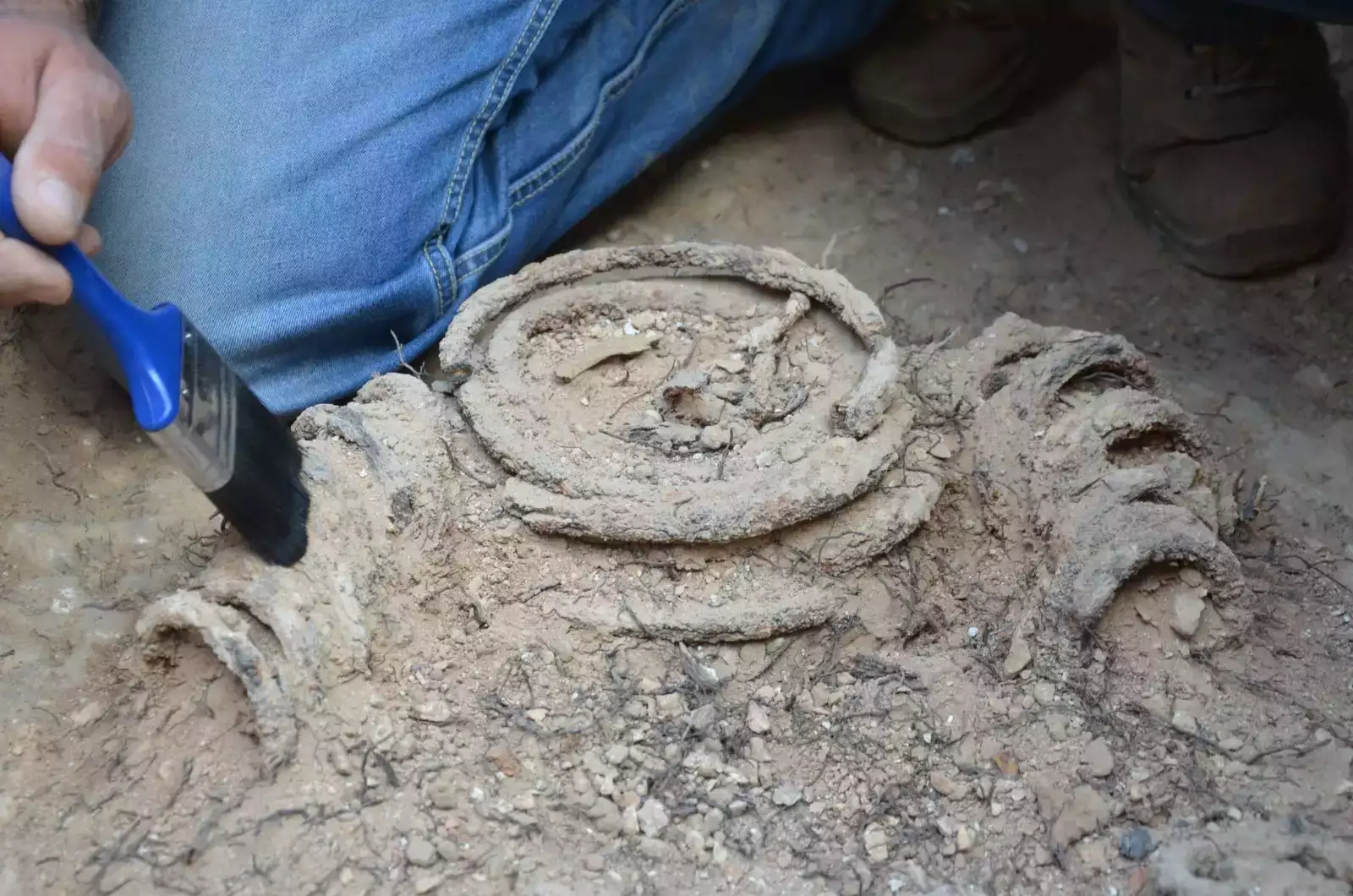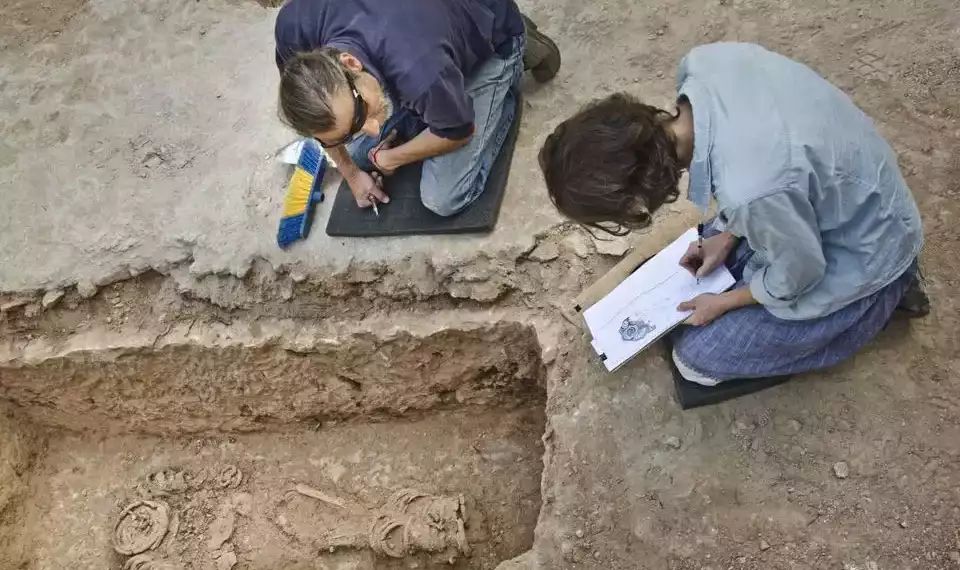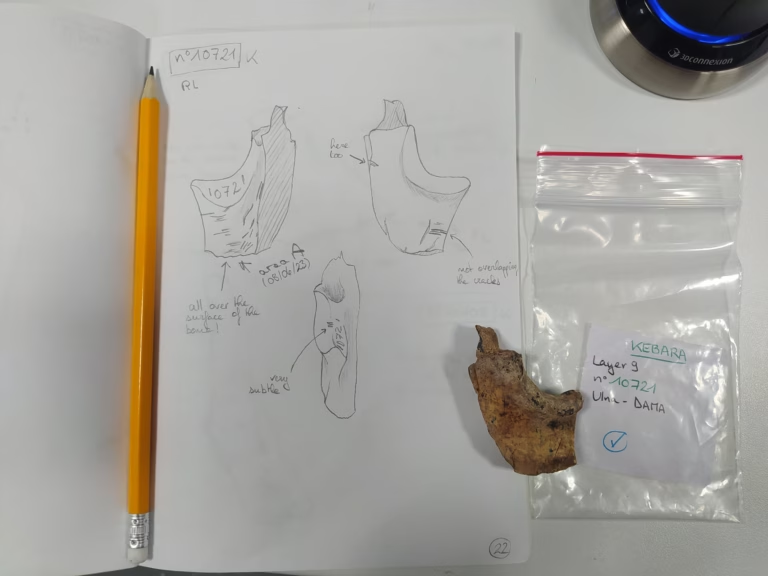In an ancient Byzantine monastery just outside Jerusalem, the remains of a woman buried with 30 iron rings attached to her body have been found. This striking discovery provides the first archaeological evidence of extreme asceticism among female monks, a phenomenon previously known only from historical texts. Innovative technology used by researchers from the Israel Antiquities Authority and the Weizmann Institute of Science determined the biological sex of the buried individual through protein analysis from dental enamel. This cutting-edge method revealed that the skeleton belonged to a woman.
The Mystery of the “Armored Nun”
According to researchers Zubair Adawi, Kfir Arbiv, and Dr. Yossi Nagar, the woman was found in an individual grave dedicated to her as a mark of honor beneath the church platform. She was bound with 12 to 14 rings around her arms or hands, four rings around her neck, and at least 10 rings on her legs, giving her skeleton an armor-like appearance. The discovery site is located approximately three kilometers northwest of the Old City of Jerusalem and has been identified as a Byzantine monastery that operated between the 5th and 7th centuries CE.

Asceticism and Spiritual Elevation: A Voluntary Form of Devotion
It is important to emphasize that the heavy iron rings were not a method of torture or punishment applied to monks and nuns, but rather a voluntary act. Historical sources indicate that such practices were one of the extraordinary ways in which monks (and apparently nuns as well) sought self-annihilation. The prevailing belief at the time was that the further one distanced oneself from pleasures and the more one tortured their body, the higher their soul would ascend to spiritual heights.
“Extreme Asceticism: An Individual Expression”
According to excavation directors Adawi and Arbiv, the nun represents an expression of a phenomenon that was inherently individual and characterized by extreme asceticism, which was common among Byzantine monks in ancient times. They detailed various methods by which monks inflicted self-harm and self-destruction on their bodies, including prolonged fasting, binding the body with iron chains and various accessories, tying the body to rocks, carrying heavy weights, and placing the body in devices that forced it to stand and prevented sleep, as well as self-imprisonment in narrow and isolated living spaces.
The Spread of Asceticism and Historical Context
The researchers noted that this new discovery reinforces the understanding that extreme asceticism began in Northern Syria and Anatolia, spread to Asia Minor, and simultaneously advanced southward toward Jerusalem and Egypt, eventually reaching Western Europe.

Dr. Amit Ram, an archaeologist in the Jerusalem region at the Israel Antiquities Authority, emphasized the historical and gender context of the discovery: “Ascetic nuns are a fascinating phenomenon. These women lived and operated in a rigid patriarchal environment that restricted their movements. To participate in the noble religious ideals of monastic life and asceticism of the time, they were often forced to adopt male disguises, according to traditions and legends, and lived this way until their deaths.”
Historical texts indicate that many women came to Jerusalem, settled there and in the surrounding areas, and even established monasteries. It is possible that the discovered “ringed nun” was a nun who came from Syria to Jerusalem after being exposed to this phenomenon or a local nun who adopted the method.
Eli Escusido, Director of the Israel Antiquities Authority, concluded: “This fascinating discovery will require researchers at the Israel Antiquities Authority to conduct further studies to better understand the role of women in religious and monastic life during that period.”
This finding sheds light on the depths of Byzantine monastic life and extreme asceticism in Jerusalem, establishing an important place in historical and cultural context.
Cover Photo: Israel Antiquities Authority/ Yoli Shwartz





